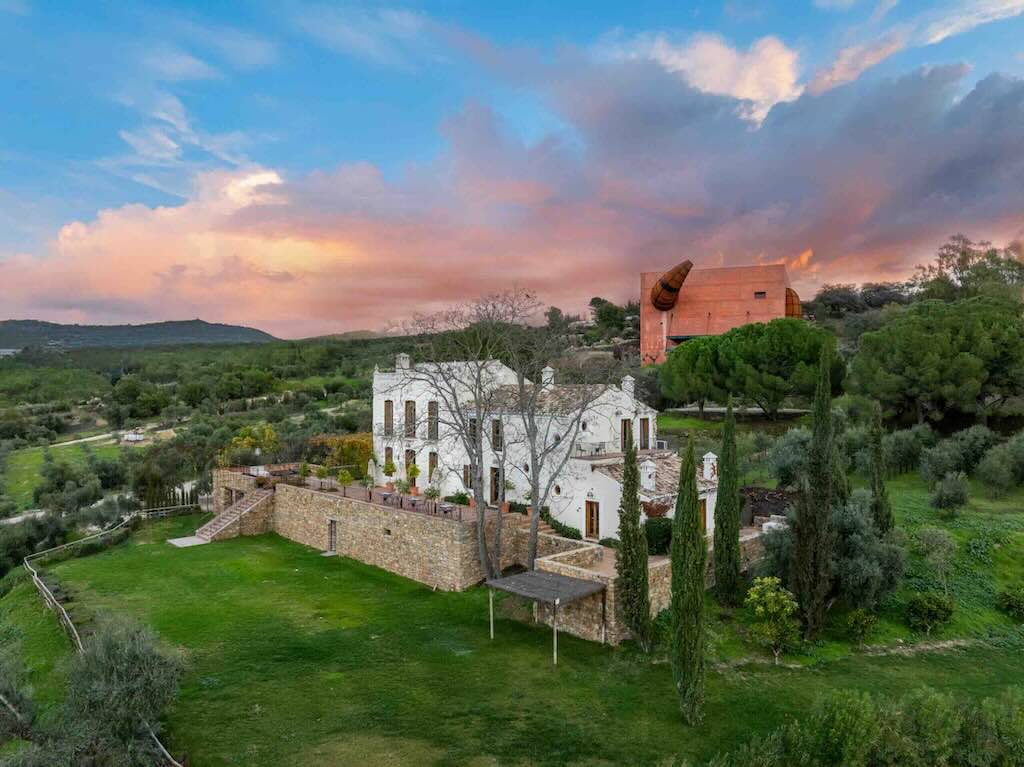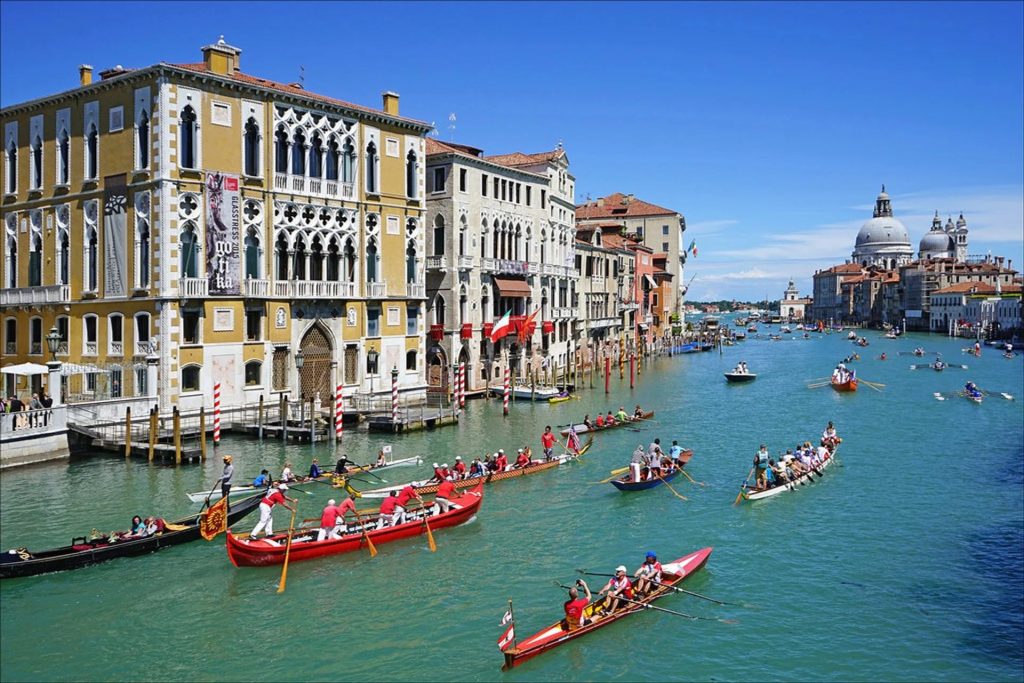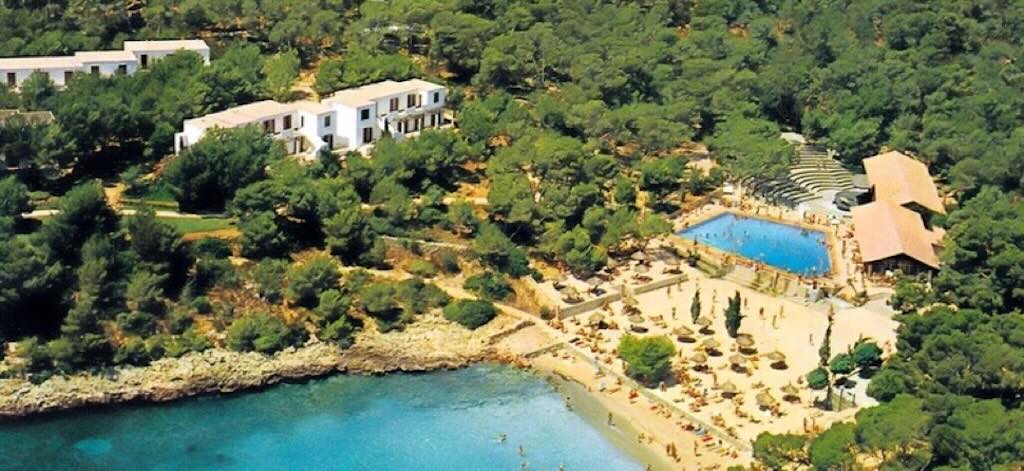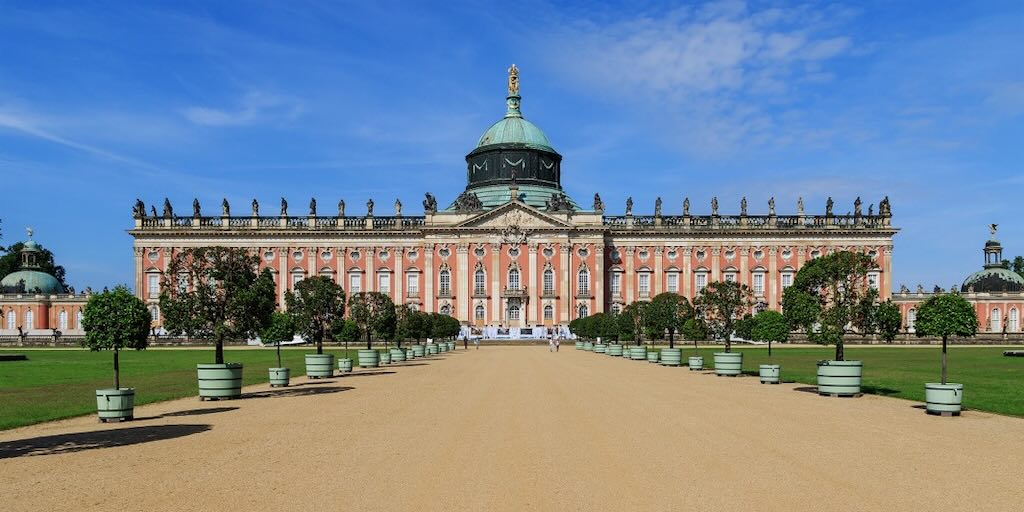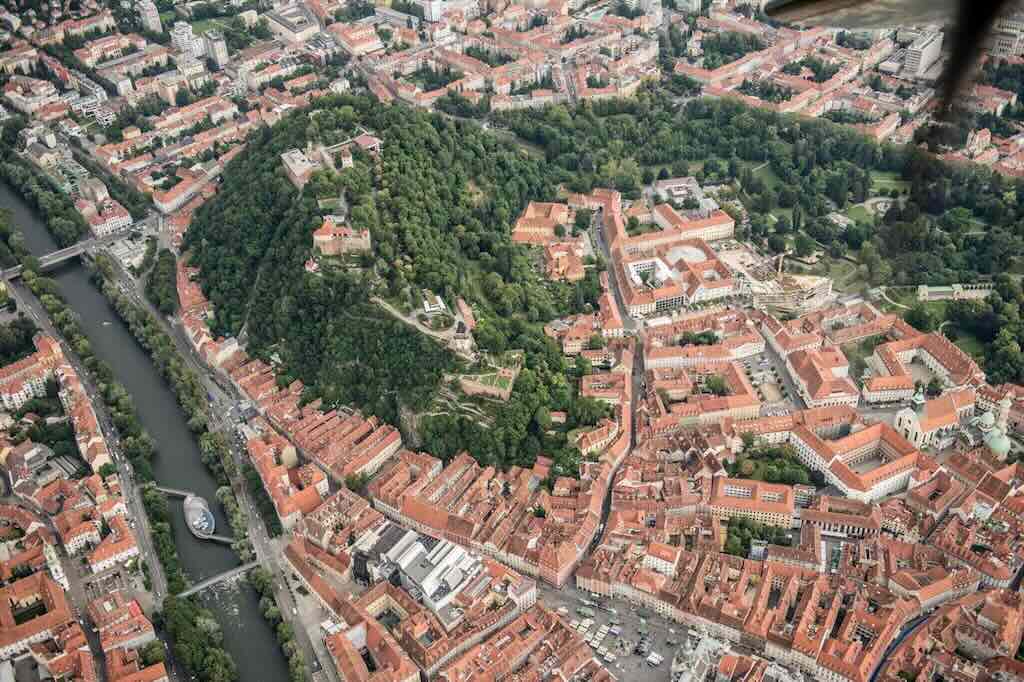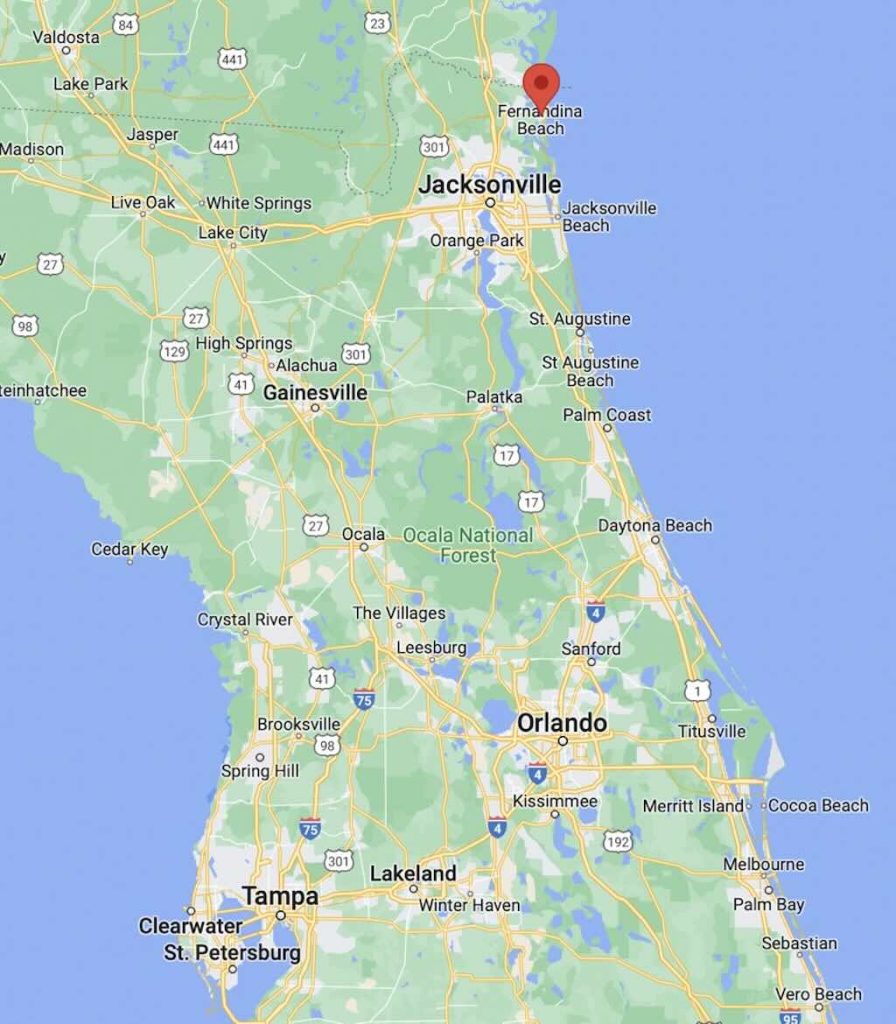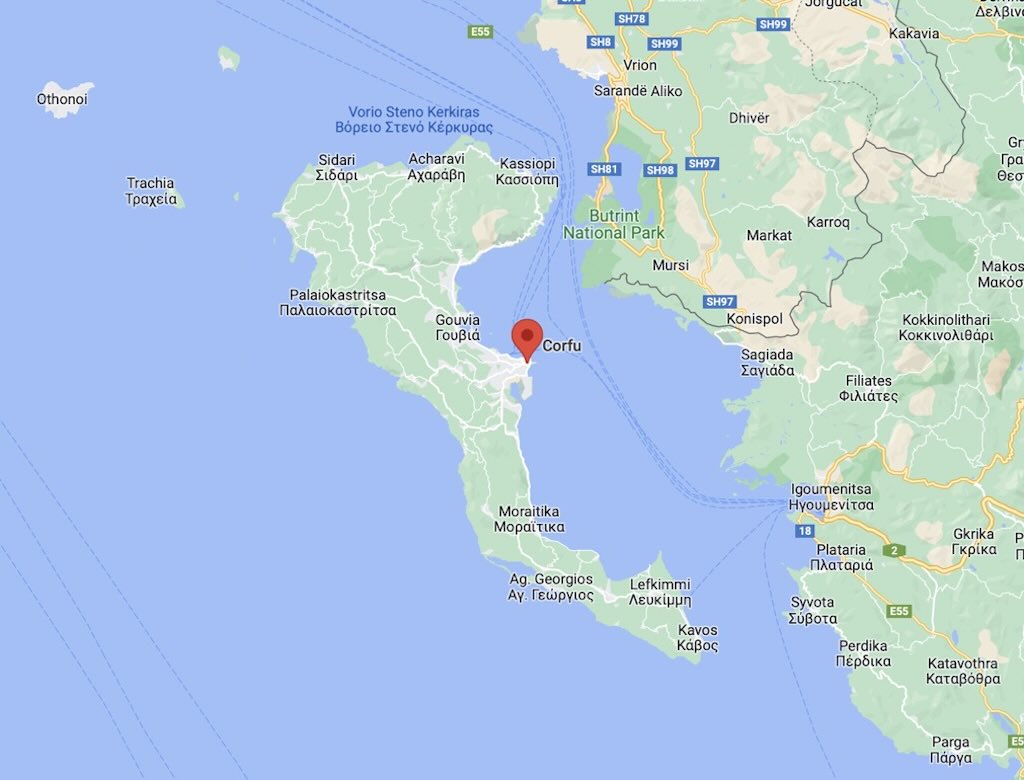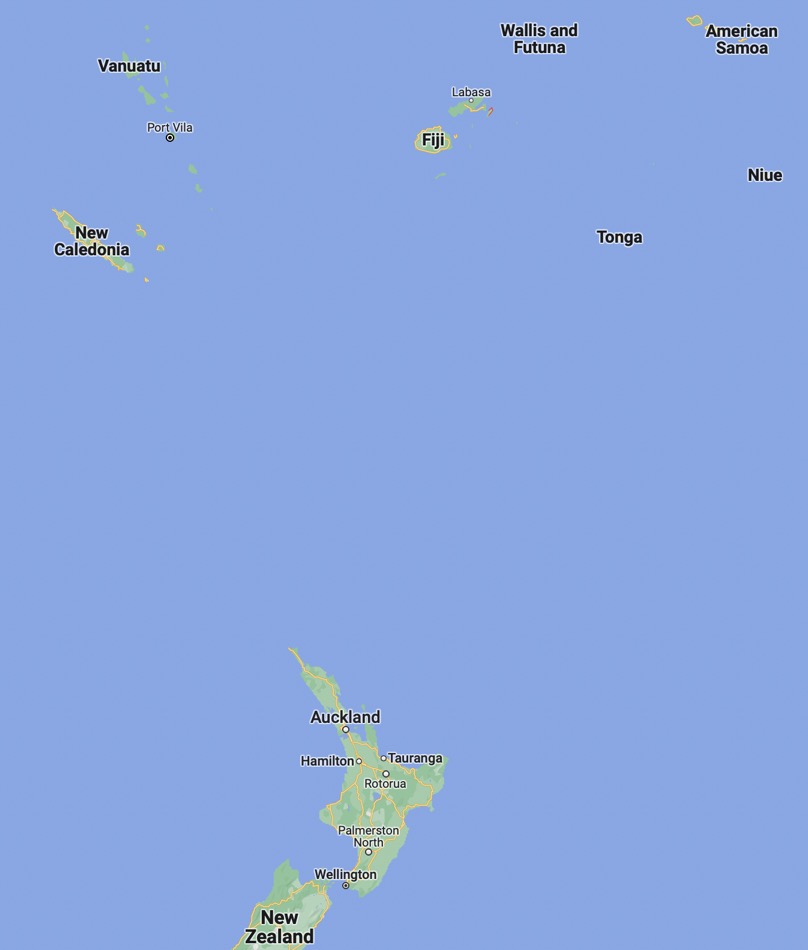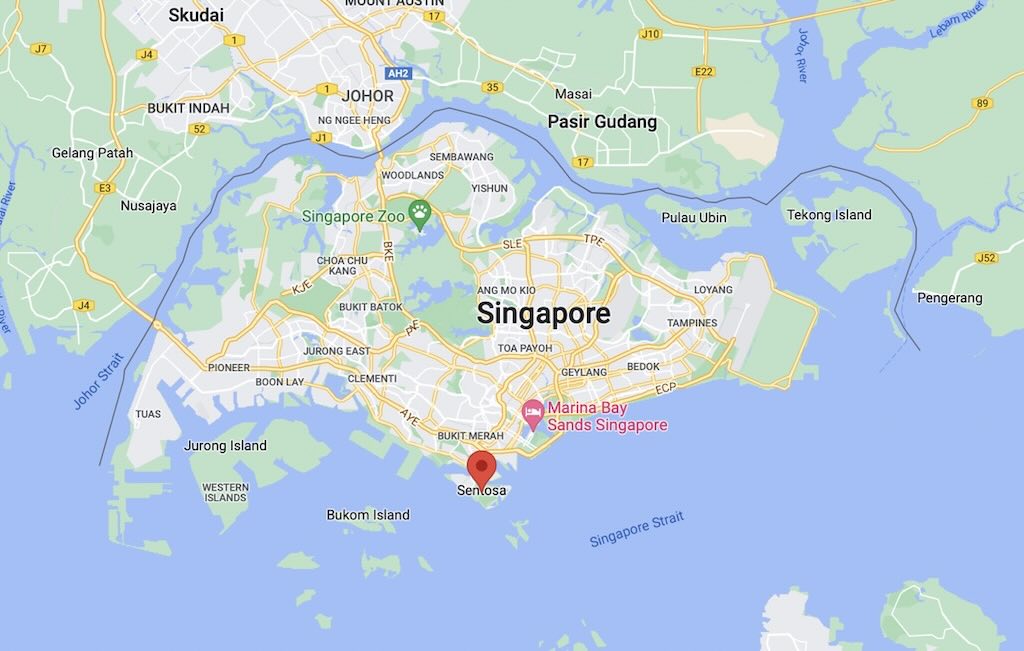LA Almazara, designed by Philippe Starck, is a €22 million architectural project located near Ronda in the Serranía de Ronda, the province of Málaga, Andalusia, Spain. Commissioned by LA Organic, the building serves as a multi-functional space encompassing an olive oil mill, museum, restaurant, tasting rooms, and event areas, all aimed at promoting oleotourism. The best way to understand what this is, is to peruse back issues of the Olive Oil Times.
Visiting Ronda, we turned up to visit the “oil mill museum”. We were lucky that we could join a group for the visit, but the restaurant was full with a group tour.
I would certainly advise to book.
About olive oil
Global olive oil production in 2023/24 was estimated at 2.83 million tonnes, marking a 12% decrease from the previous year due to adverse weather conditions in key producing regions. However, the forecast for 2024/25 is for a rebound to approximately 3.38 million tonnes, a 32% increase, assuming favourable climatic conditions.
Consumption is expected to reach 3.06 million tonnes in 2024/25, reflecting a 10% increase from the previous year.
Spain is the world’s leading olive oil producer with around 1.4 million tonnes of olive oil annually, accounting for approximately 40% of global production. In 2023/24 production was estimated at 850,157 tonnes, which exceeded initial expectations despite challenges posed by droughts. The forecast for 2024/25 is for an increase to approximately 1.29 million tonnes, a 51% rise compared to the previous year, contingent on improved weather conditions.
Andalusia is responsible for about 80% of Spain’s olive oil production. However, for 2023/24 only a slight recovery is expected with production reaching 550,600 tonnes, still significantly below historical averages.
Jaén province alone produces over 20% of the world’s olive oil, making it a pivotal region in the global olive oil industry. In 2024, Jaén increased its early harvest olive oil production by 40%, reaching 5.3 million kilograms, up from 3 million kilograms the previous year.
Spain’s olive oil production has seen reduced yields and increased prices. The scarcity of olive oil has led to price surges, with extra virgin olive oil prices reaching record highs in some regions. This has led to an increase in fraud and mislabeling.
LA Organic operates across multiple olive groves in Andalusia, Spain, with their main estate near Ronda encompassing only about 26 hectares. According to LA Organic, an average olive tree yields between 20 to 50 kilograms of olives per year, producing approximately 2 to 5 litres of oil. Assuming an average yield of 3.5 litres per tree, and considering that their main estate houses over 6,000 olive trees, the Ronda estate alone could produce around 21,000 litres annually.
During the visit they mentioned that the company leases around 700-800 hectares, which it manages for olive production, presumably using the same artisanal techniques. This would translate into something like an annual production of 600,000 litres.
This would be a boutique production, but if sold in the organic, high-end segment under a luxury brand, it could be significant.
Who is LA Almazara?
Firstly, it’s important to know what is an “almazara“. An almazara is an oil mill. In this case it processes olives to produce olive oil. The term is primarily used in Spain and derives from the Arabic word “al-maʿṣara” (المعصرة), meaning “the press”. The term can also refer to the building or facility itself, not just the processing system.
LA Organic is a Spanish company specialising in the production of premium organic extra virgin olive oil, headquartered near Ronda in Andalusia. The brand’s name, “LA”, derives from La Amarilla, a historic estate with a legacy of olive oil production dating back over 200 years. In the 1990s, the Gómez de Baeza family revitalised this tradition by establishing LA Organic, focusing on sustainable and artisanal methods to produce high-quality olive oil.
The Gómez de Baeza family has been the principal force behind LA Organic since its inception. Pedro Gómez de Baeza played a pivotal role in the company’s development until his passing, after which Juan Villar Mir assumed the presidency. Juan is the son of Juan Miguel Villar Mir, and president of his own company Launium Corp. (agricultural and livestock exploitation of farms). LA Organic is said to also benefit from the expertise of notable shareholders, including renowned oenologist Michel Rolland, who contributes to the brand’s emphasis on quality and innovation.
It’s not our role her to discuss family-economic politics (or worse), but a recent article clearly highlighted the fact that the burden of debt has been decomposing the family holding. The article clearly states that the heirs of Juan Miguel Villar Mir (Juan, Silvia, and Álvaro) are squandering their father’s inheritance, and that “vulture funds” have acquired a part of the family holding. And that’s not all, read the article!
The idea is that LA Organic collaborates with local farmers across Andalusia to source olives from various groves, ensuring a diverse and rich flavour profile in their oils. The production process emphasizes traditional methods, with olives harvested by hand and processed promptly (within 24 hours) to maintain optimal freshness and quality. They appear committed to organic farming practices and sustainability, and position themselves as a leader in the premium olive oil market.
Architectural Design and Symbolism

The collaboration between LA Organic and Philippe Starck for the design of LA Almazara began in 2005, when Starck was initially commissioned to create packaging for LA Organic’s olive oil products. This partnership evolved over time, culminating in the conception of the avant-garde olive oil mill near Ronda, Spain.
The project’s development gained momentum in the early 2010s, drawing inspiration from iconic ventures like the Marqués de Riscal winery designed by Frank Gehry (see my travel report). The vision was to create a unique destination that blended olive oil production with cultural and architectural innovation.
Construction of LA Almazara officially commenced with the laying of the first foundation stone in October 2021. After several years of development, the mill opened to the public in October 2024, offering visitors an immersive experience that combines olive oil production, art, and Andalusian heritage.
The above photo is an earlier “concept”, whilst the below photos are of the actual building.
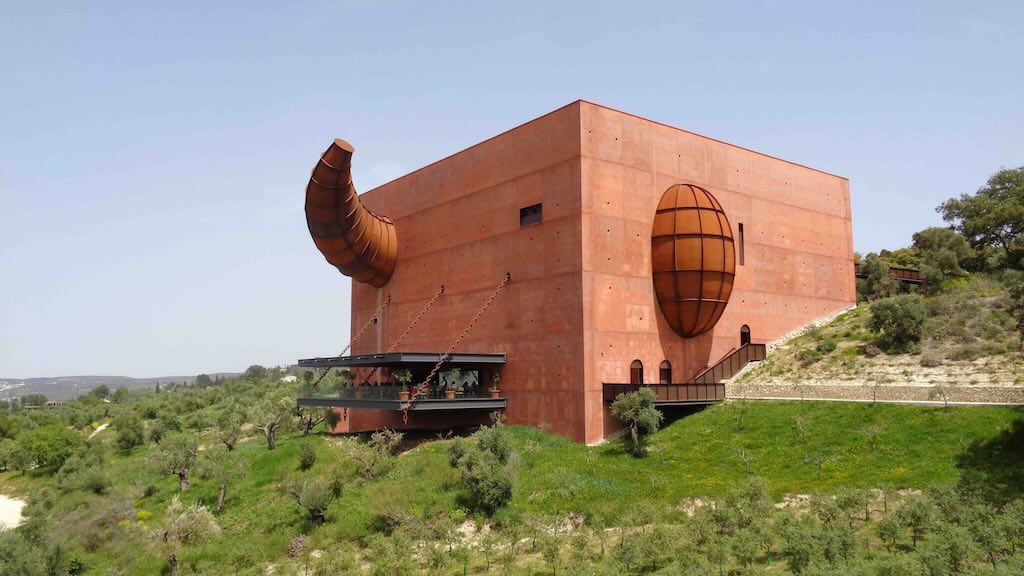
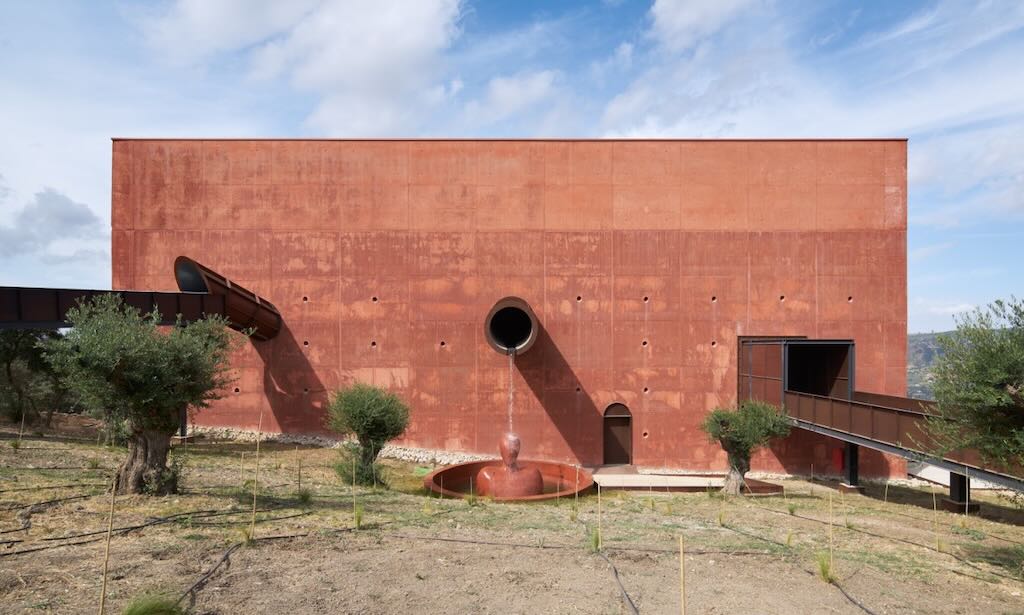
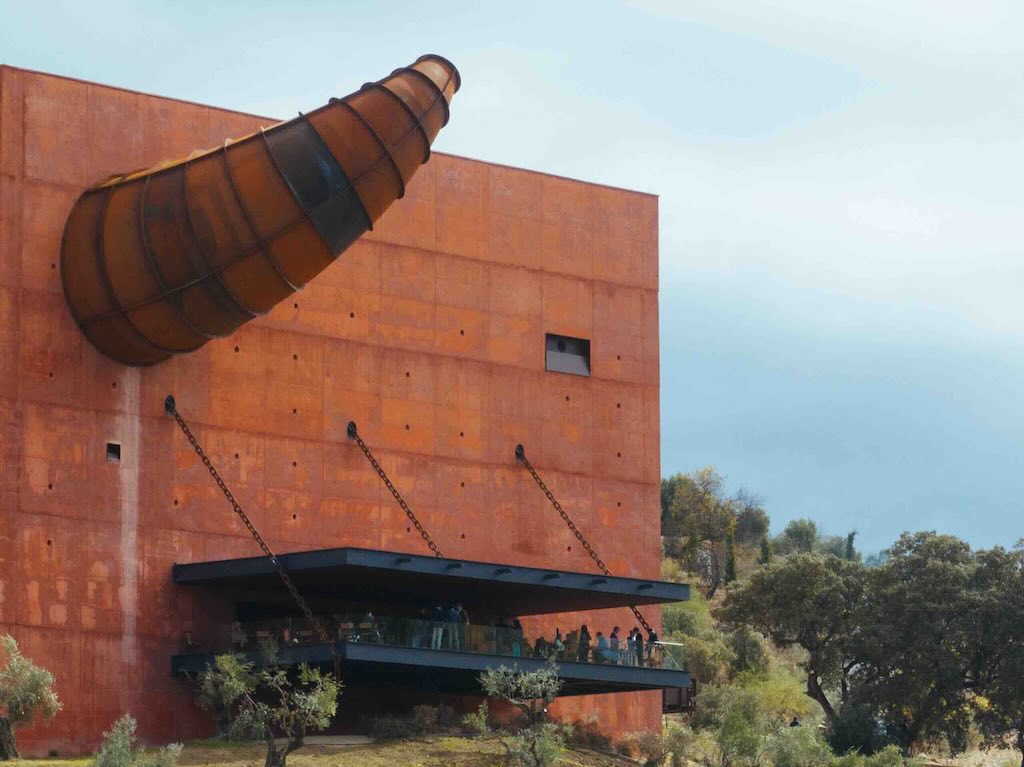
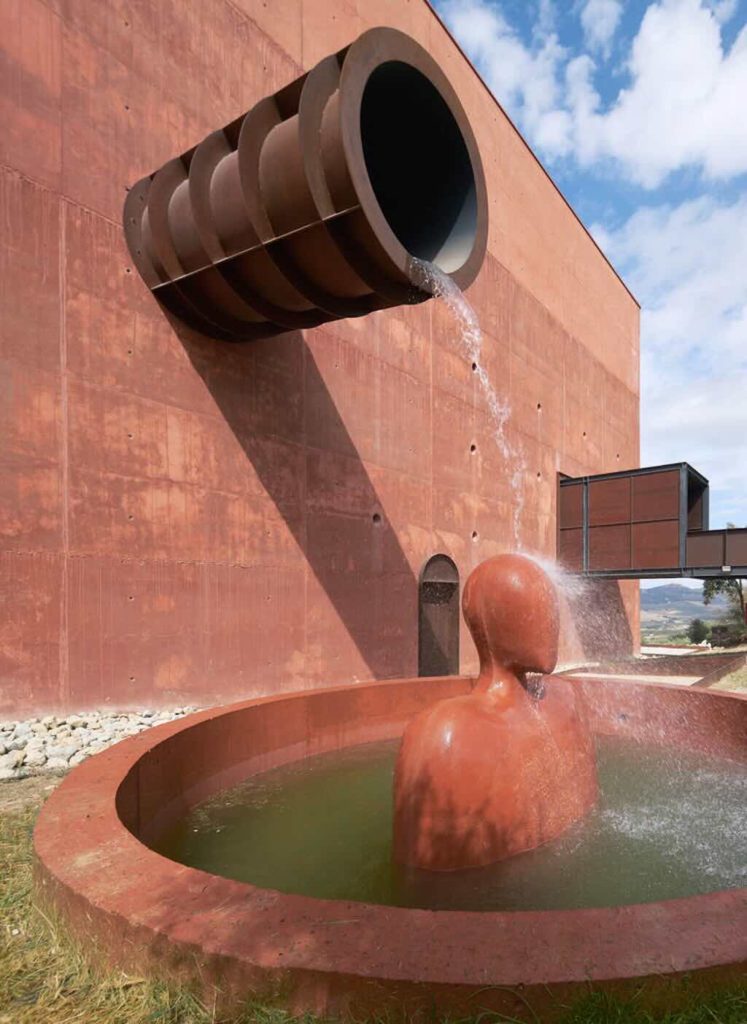
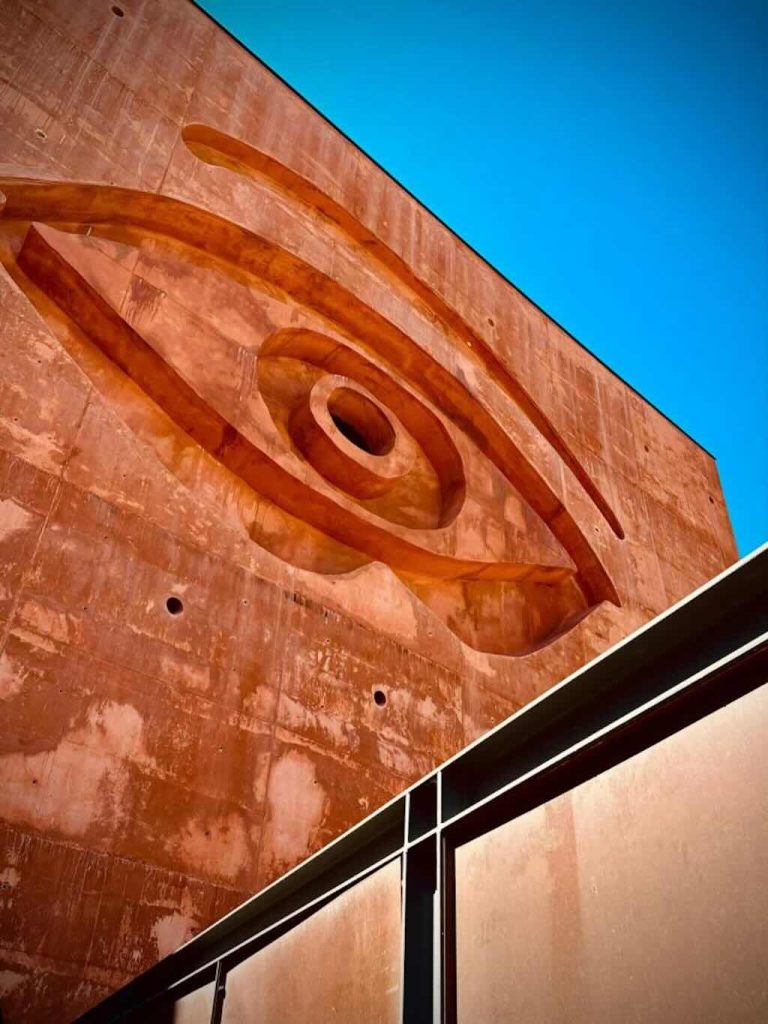
The eye-catching ‘toro’ inspired building is conceived as a minimalist, monolithic red cube (Starck calls it a “bull”), constructed without cladding to emphasise raw materiality. The concrete cube measuring approximately 30 by 30 by 25 meters, resulting in a total surface area of around 900 square meters. This structure stands 35 meters tall and houses facilities such as a museum, an auditorium with a seating capacity of about 100 people, and a restaurant offering views of the Serranía de Ronda.
Its austere exterior is punctuated by surrealist elements:-
- Steel Bull’s Horn: A massive corten steel horn protrudes from the structure, symbolizing Andalusia’s bullfighting heritage
- Concrete Eye: A large eye cast in concrete emits black smoke, referencing the vigilance of Andalusian surrealist artists and paying homage to Pablo Picasso
- Half Olive Sculpture: Embedded in a rusted steel wall, this element honours the region’s olive oil tradition.

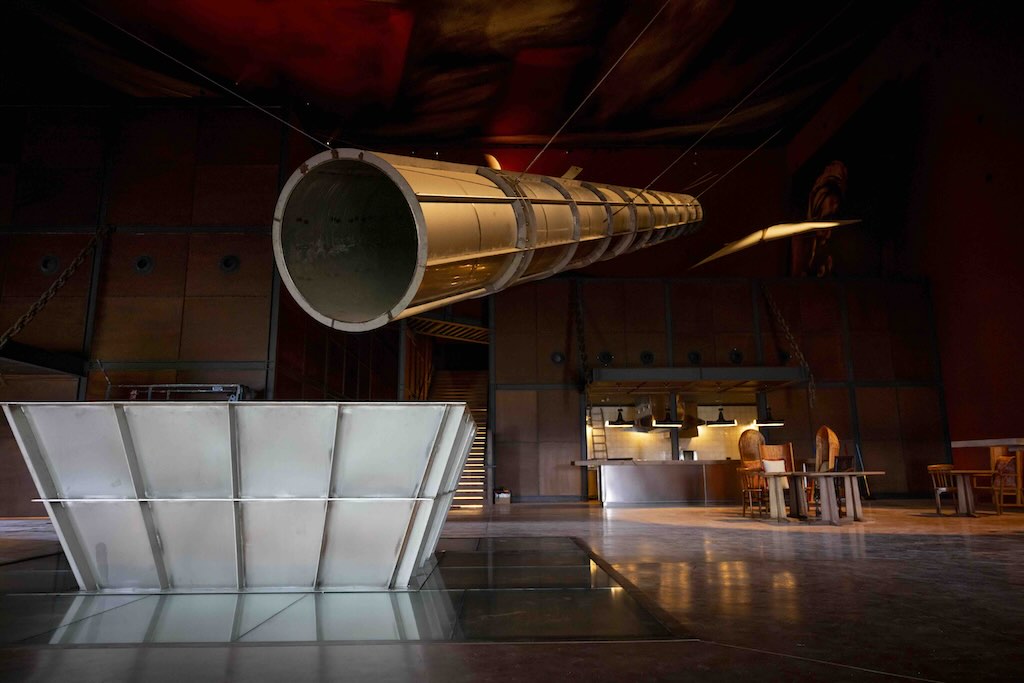
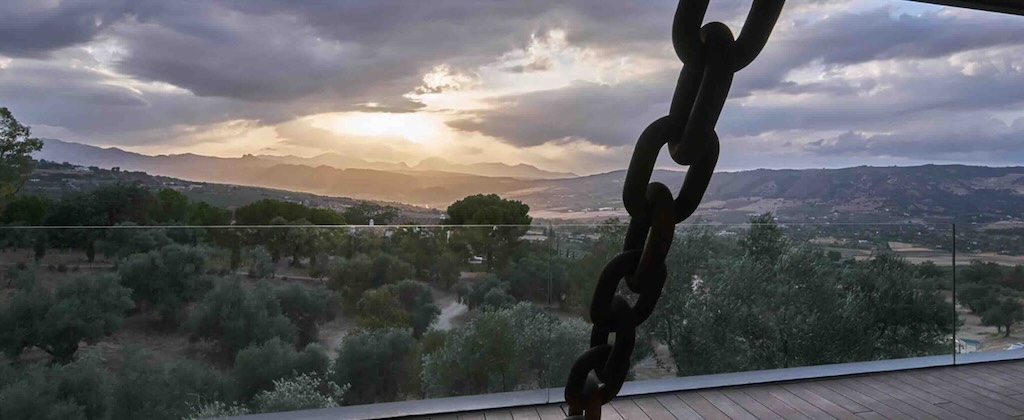
Inside, visitors encounter a series of symbolic installations:-
- Metal Pipe: A pipe that penetrates the building without an exit, suggesting the continuous flow and mystery of olive oil production
- Headless Figure: A large, anonymous figure representing the universal worker and humanity’s collective effort.
- Cantilevered Terrace: Suspended by large metal chains, this terrace (the “bulls” mouth) offers panoramic views of the surrounding olive groves, blending the interior experience with the natural landscape,
The construction is supposed to emphasise sustainability, utilising recycled concrete and plastics, and harnessing existing biomass for heating. This approach “reflects a deep respect for the local ecology and aligns with the project’s minimalist ethos”.
Since it opening on October 21, 2024, the facility offers “an immersive experience into the world of olive oil, combining production, education, and gastronomy”. Visitors can explore the operational oil mill, engage with museum exhibits, participate in tastings, and dine at the on-site restaurant. The official LA Almazara website is almazaralaorganic.com.
Conclusion
It’s well worth the visit, but it’s certainly better to book. It’s planned for 40,000 visitors a year (possibly cruise ships from Cádiz or Málaga). It also has a few bedrooms, but they may be reserved for meetings, marriages, etc.
I was impressed by the overall concept and site, but I found the interior a bit underwhelming and too dark.
I would certain suggest combining it with a visit to another, more traditional olive oil producer in the region.
